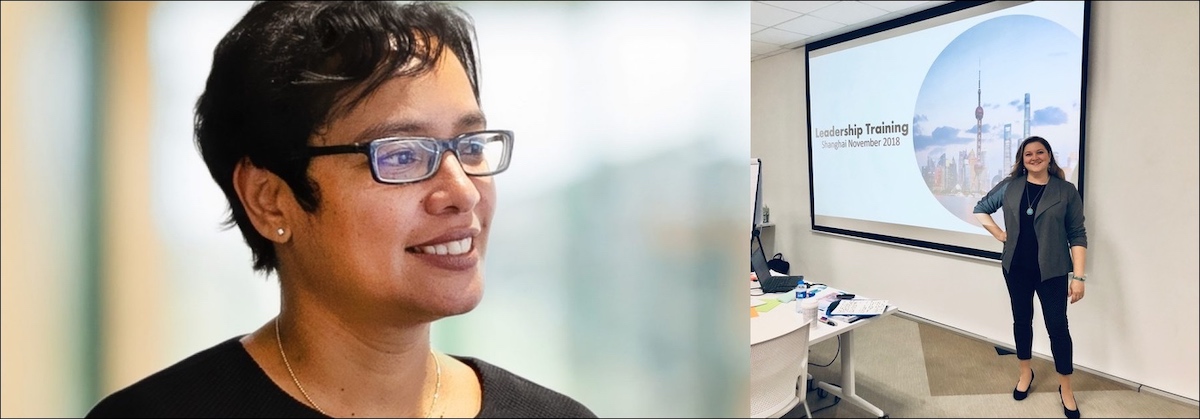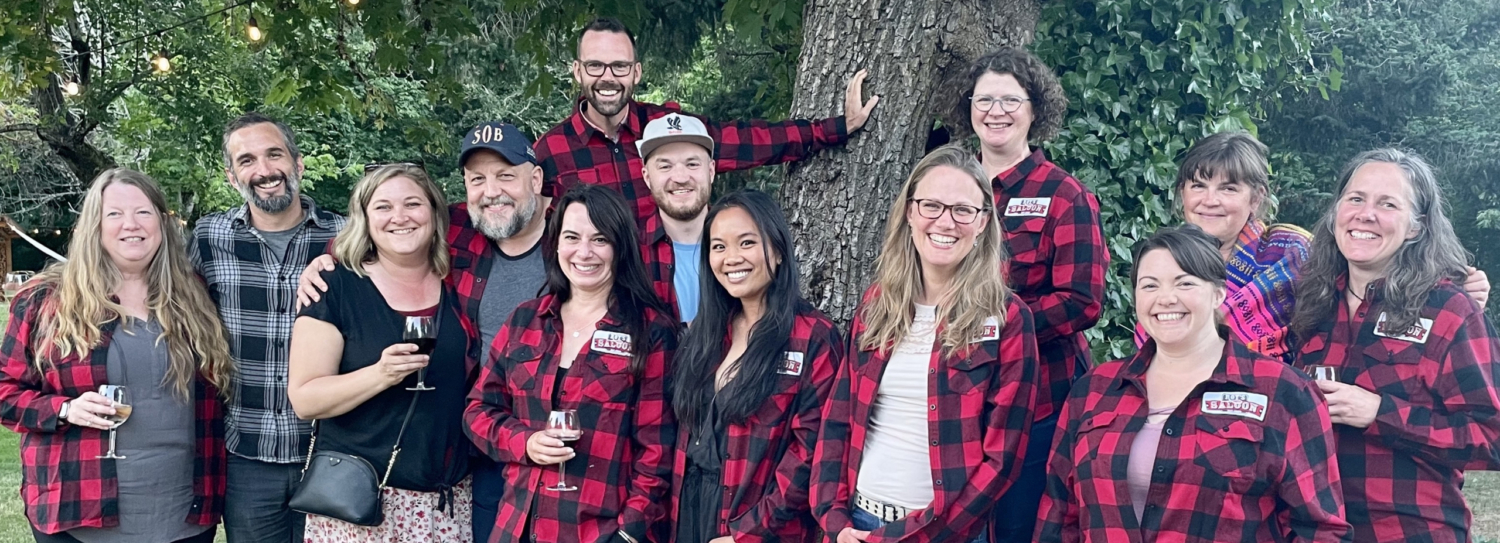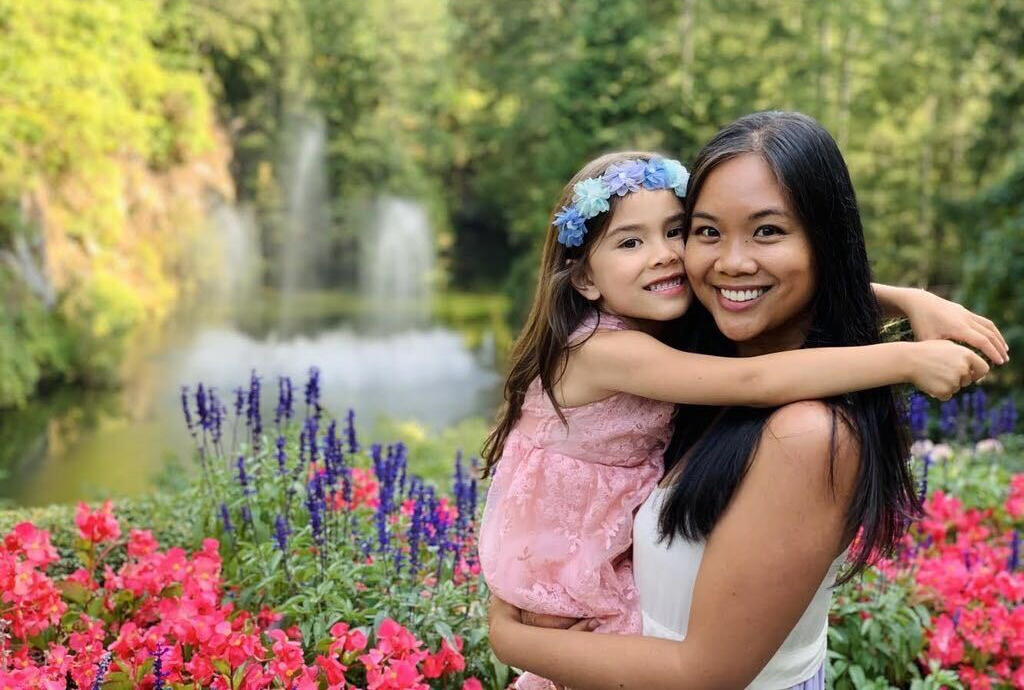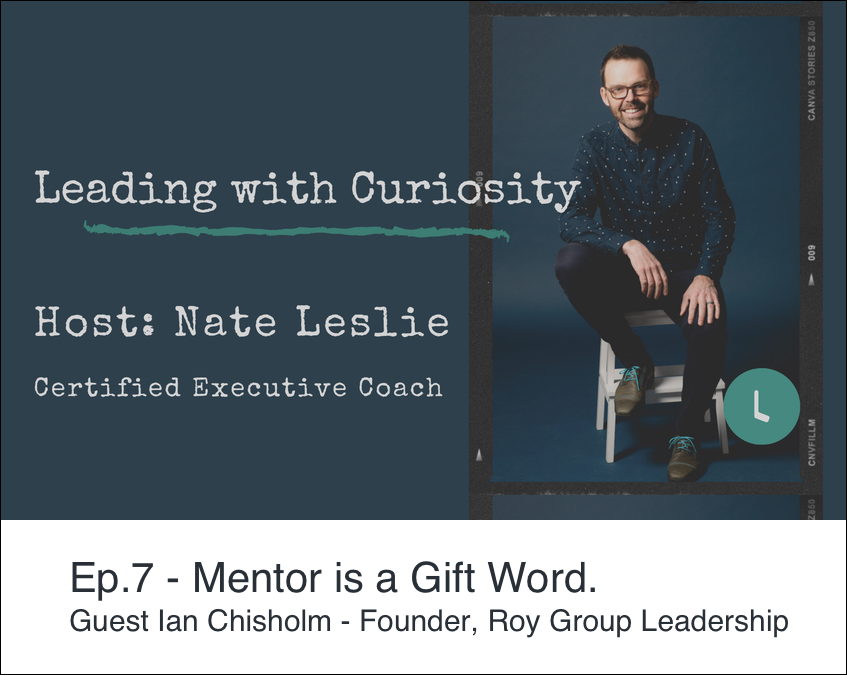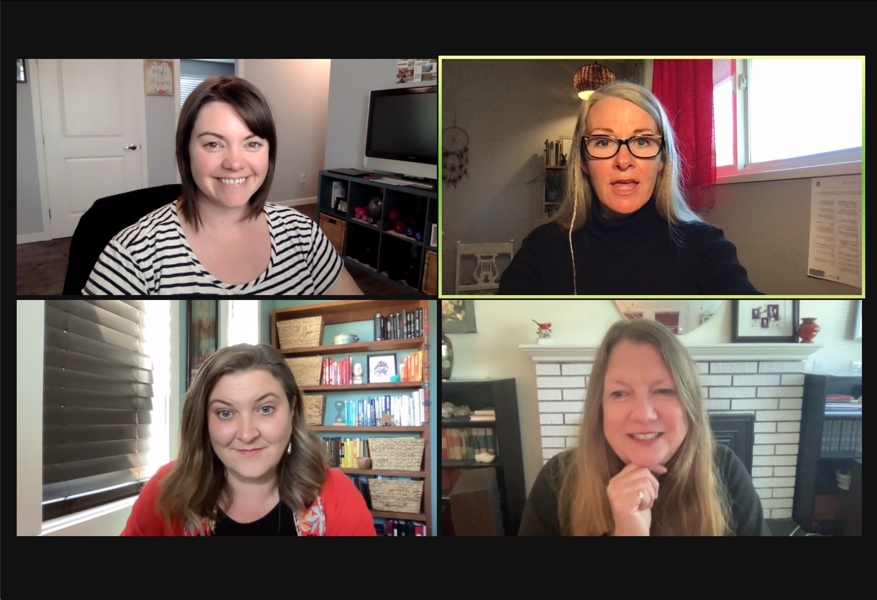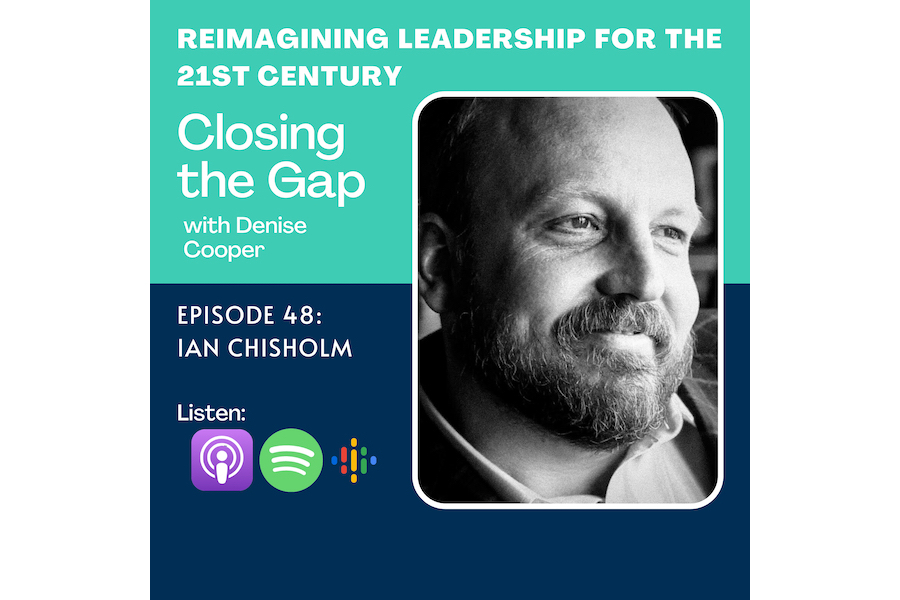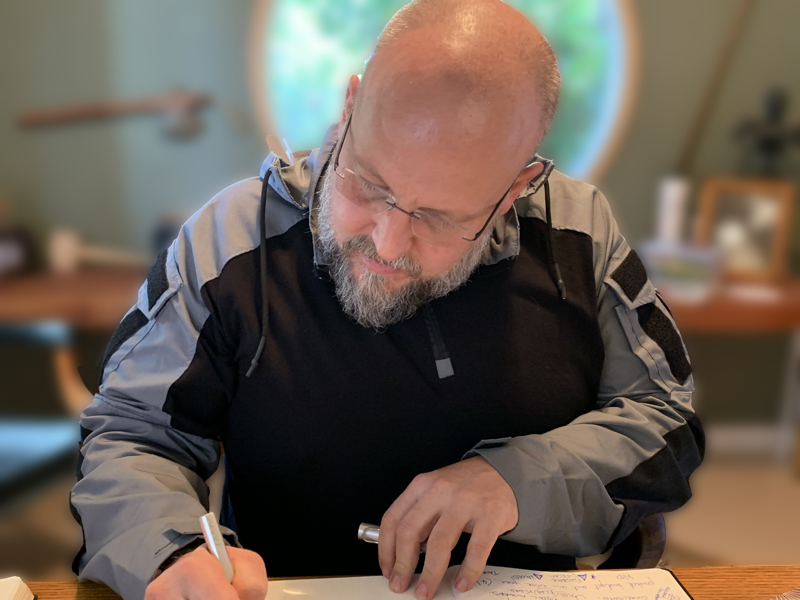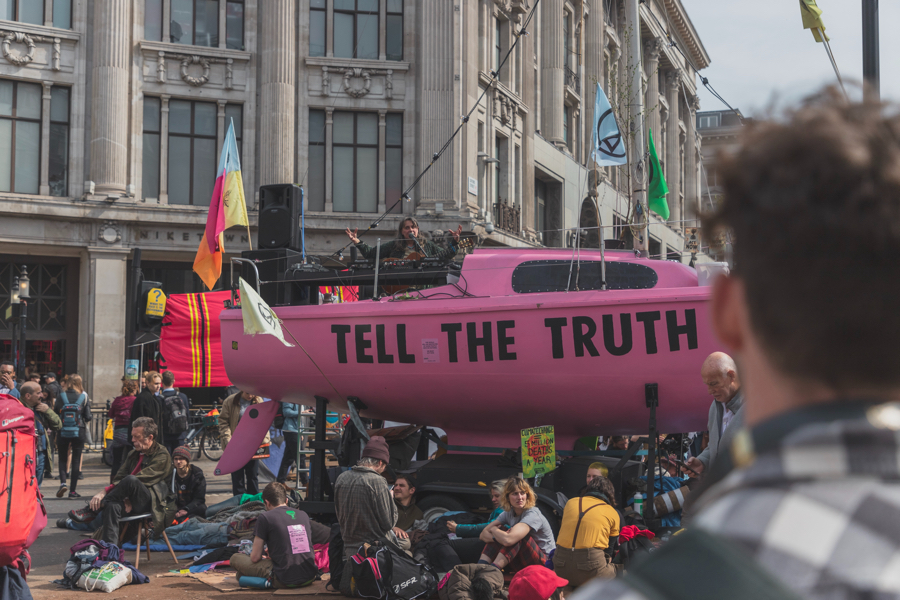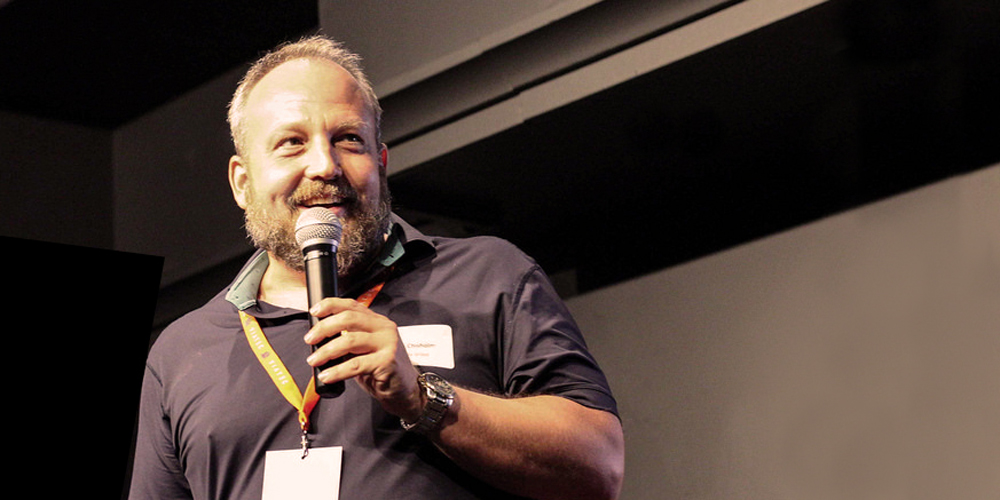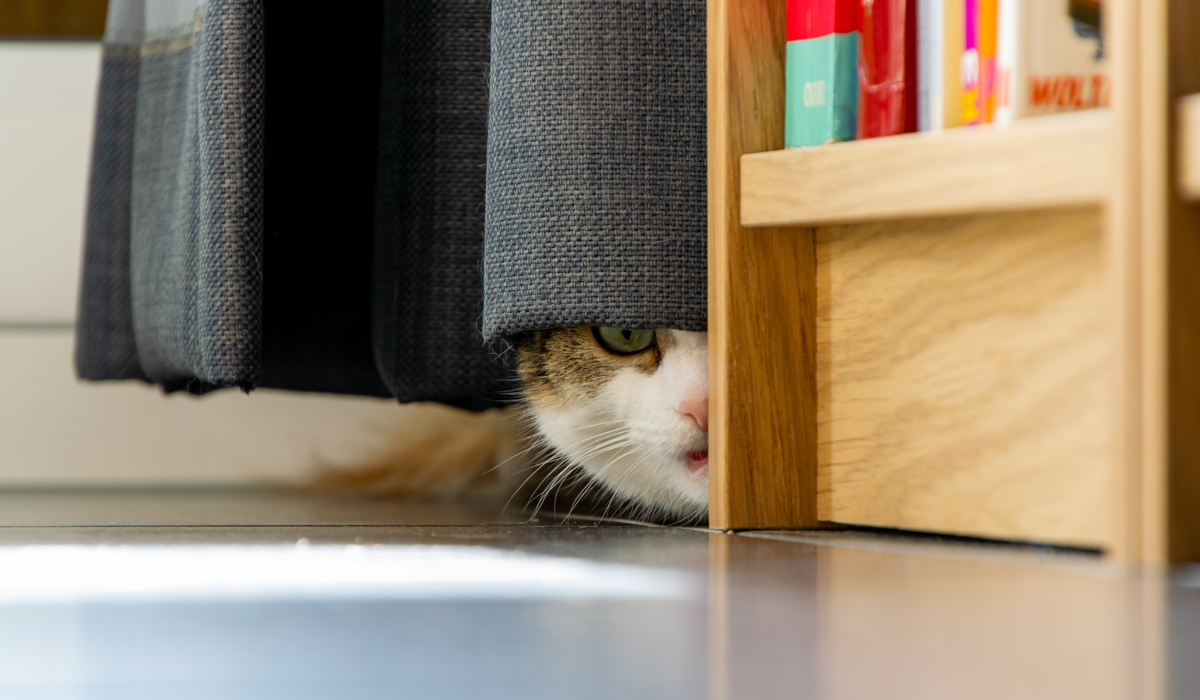In the moment, we think we need to know it all. We worry that if we don’t have the answers, then we’re not really leaders. And when we do have the answers (or think we do), we want to save some time by straight up sharing them with other people—delivering everything in the binder, so to speak.
In this episode of Leading with Curiosity, podcast host and Roy Group Learning Lead Nate Leslie talks with Chiz about the art of observation and discerning ‘what it is time for’—whether that’s advice, direct instruction, a briefing on key information, or coaching somebody to learn from their own experience. The conversation ranges from the board room to the locker room to the savvy streets of Glasgow as these two unpack the habits of inquiry we see exemplified by the finest leaders.
Pro tip: Your conduct is everything.
Listen here.
Key talking points:
- We need to tap mentorship as a force to move us forward. COVID-19 sidelined us all, but what really set us on our heels was watching the US—one of the world’s most capable nations—falter in the face of something it should have been able to deal with.
- Some titles need to be earned. From our seasoned Learning Lead Bob Chartier, we’ve learned that team, leader, Mentor…these are words you shouldn’t throw around. They represent hard-won value. Use them deliberately.
- The more options you can sense in advance as a leader, the more effective your steering. When you can clearly discern what it’s time for and act accordingly in any given conversation, you’re better able to position people for making the most meaning from the next stretch of their road.
- A leader’s work of self-mastery begins with their conduct. Conduct is where everything that’s going on inside us meets the rest of the world. It is the last outpost of sovereignty, where we get to choose how we show up in any given situation. (Yes. You actually have the ability to pause…and choose. Great leaders cultivate this with ferocious focus.)
- Self-awareness is key to mastering your conduct. Self-aware leaders learn to ask: What about my conduct is creating value? And what about the way I’m conducting myself is getting in the way of us being able to move forward?
- You don’t need to be an expert to coach people well. Throughout the 1990s, the Gemini Project in Scotland showed how true this is. When street-smart youth from Glasgow can coach emerging leaders from Edinburgh’s finance sector—without knowing a thing about portfolios or profits—you know you’ve got a formula that works.
- Your labels don’t define you. Just because someone is using words like underprivileged or disadvantaged to describe you, it doesn’t mean they are right. Look for the steel forged by your challenges.
- There is too much for leaders to know. It’s 2021. Who on Earth can keep up? Let go of having to know everything. Know your stuff—and honour that others know theirs. Understand that conduct and curiosity will move a group forward—even into territory that is unfamiliar to everyone.
- Good coaching is in all likelihood not what you experienced as a kid. Few amateur sports coaches are trained in coaching. But once you dig into the discipline, you realize there’s a powerful history and set of practices to help people tap their gifts.
- You’ve got to focus on learning if you want to be masterful at coaching. It’s not about the quality of the teaching. Not at all.
- Leaders who are masterful at coaching are comfortable with risk. Feels counterintuitive, but letting go of control increases organizational capacity. Position your people to find the answers within themselves.
Learn how a coaching approach can free you from having to know all the answers. The Leader’s Discipline™ open course runs several times a year, or bring Roy Group in-house to work with your team.
Full transcript:
Ian Chisholm speaks with Nate Leslie on the Leading with Curiosity podcast, May 2021
Nate: Hello listeners. My guest today is significantly impacting my career in leadership development and executive coaching. It’s my honor to share him with you today, and his courageous views on what it means to be a Mentor and why we can’t call ourselves one. He’s been trained by members of the British SAS and spent years leading a program on the Isle of Skye where at-risk teens from tough parts of Glasgow and around Scotland had the opportunity to coach and be coached by executive leaders. Ian Chisholm is the founder of Roy Group Leadership in Victoria, British Columbia. I’m proud to be a learning lead and executive coach on his talented roster. If you care about the way you choose to show up as a leader and are curious about its impact on the atmosphere it creates in your organization, team and family, stay with us. Ian, welcome to Leading with Curiosity.
Chiz: Hey, Nate, thanks for having me. And thank you for such a nice introduction.
Nate: Well deserved. Let’s jump right in, Ian. Tell me about your convictions about the word Mentor.
Chiz: Well, we have a lot of them in that this concept of mentorship is really the north star of our firm, Roy Group. And so…where to start? I think my number one conviction these days is that it’s really relevant. In the last year, we have seen the most capable country on Earth falter in the face of something that it should have been able to face. It has all the science and medical capacity. It has the logistics capacity to keep its citizens safe and to be an example for the world. And they didn’t. They were not able to rise to that occasion. So what got in the way? That gives us a glimpse into what we’re up against in terms of this modern era. And I guess my biggest conviction about mentorship is that mentorship is a force that we’re going to need if we’re going to address all of the issues that Covid-19 has as exposed as part of this modern world. So I think it’s something that leaders need to pay a lot of attention to.
Nate: And I love when we call it a gift word. Let’s go there.
Chiz: Yeah, that was a concept that was shared with me by a Mentor of mine named Bob Chartier, who, if you haven’t met yet, Nate, you will.
Nate: I have.
Chiz: He’s our Learning Lead for Engagement. And he just introduced me to this idea of gift words, that there are some words that you can’t call yourself. It lessens the value of the word if you throw it around and take it on yourself. You actually have to earn it. Other people gift it to you, if you’ve earned it in the story of their lives. And I think there’s a lot of gift words. Like leader, to me, is best used as a gift, or team to me is a gift word. We might be working together, but it actually takes somebody from the outside coming in to say, “Wow, you guys are really a team. I feel it.” And one of the most misappropriated gift words of all time is, of course, Mentor, which, we throw that word around a lot. And it’s actually one of the most valuable gift words out there in that it’s a very important moment when somebody refers to you as a Mentor in the story of their life. That’s a moment really worth earning for a lot of leaders.
Nate: I can’t help but notice you led with talking about how important Mentors are in the world and that it’s a gift word. If we’re lucky, a couple of people might call us a Mentor when this is all said and done.
Chiz: Yeah, and that’s actually one of very few ways to measure leadership. Leadership is a very tough thing to measure across sectors, around the world. But to me, the number of times you earn that word Mentor in the lives of other people tells me a lot about your ability to not only get challenging things accomplished, but to design that work in a way that develops the capacity of other people along the way. So I think the number of times you earn the word is in an important measurement to keep track of.
Nate: And if we could explore just a little more without diving into, you know, the entire block of our courses, just this idea that there’s a time and a place for different behaviours as a leader that lead to becoming a Mentor. And today, let’s say, you know, coach[ing] being one of them and, you know, putting away that desire to tell people what to do.
Chiz: Yeah, and underneath all of those options, I mean, we can choose to conduct ourselves in any way that we want in any given situation, but the discernment to know what it’s time for, that’s kind of right underneath the plot line…that once a leader… And I think it takes time and I think it takes lots of experience; it also takes an openness to learning about all of the different options that you have. But when a leader can very clearly discern what it’s time for and act accordingly in any given conversation, maybe it is instruction, maybe it is advice, maybe it is, you know, a very clear briefing of key information. Maybe it’s coaching somebody and positioning them to learn from their own experience…that gear-shift is kind of underneath leadership more now than it ever has been in terms of choosing the right way to have this conversation that’s in front of my face.
Nate: Let’s…I introduced you mentioning that you had been trained by members of the British SAS and we talked about conduct in coaching. What was your biggest takeaway through that experience? And maybe let’s set it up as a bit of a story for the listeners, because it’s compelling. Tell us about that experience.
Chiz: Yeah. So now, the way you said it sounds slightly dramatic. So I just want to make sure that…I hope that got people to listen to the podcast! But let’s just qualify this for sure. I came to my office one morning and there was an envelope on my desk saying that I had been accepted to a program called Foundation. And I thought that was odd because I hadn’t applied for a program called Foundation. As soon as I opened it up and went online to find out what this program was, I suddenly realized that a gentleman named Rod Stuart Liddon, who had been one of our faculty members in Scotland, he worked as an instructor with a lot of our groups of young people. He had been in the SAS and this program was actually designed for former members of the Special Forces. Their careers are so steeped in leadership and teamwork that when they come out of the military, there’s this desire to continue learning, but also to share what they had learned about leadership and teamwork. So suffice to say, it was a very challenging, rewarding and memorable program that I was able to take part in.
Nate: And you’ve talked a lot about conduct, the way we carry ourselves, just the impact that the way we show up can have in all parts of our life. What can you share with our listeners about conduct?
Chiz: I guess first of all, until recently, it was a very old-fashioned word. We didn’t talk about conduct nearly as much as we talked about misconduct. But I think in terms of the political adventures of our neighbours to the south the last four years, all of a sudden people are talking about, you know, presidential conduct. And is it important the way a person conducts themselves? Or can they just be, you know, totally free and say and do whatever they think they want to do in that moment? Conduct is where everything that’s going on inside us meets the rest of the world. And therefore, it’s kind of the last outpost of choice where we get to choose how we show up in any given situation, a good situation or a bad situation. And so after 25 years of doing this work, I am just convinced that that is actually where a leader learns how to master themselves. It’s being aware of the way that they conduct themselves in any given situation and choosing a conduct that will not only influence the situation, but will actually influence the people involved. The biggest mistake that I see from doing this work is that leaders underestimate the impact that their conduct has in any given situation. Therefore, it deserves attention and focus so that that’s where mastery can begin.
Nate: Nice. And hence our conversation about the turtle on that learning through foundation [“the turtle” is a graphic Roy Group conceptualization of what’s necessary for working well with a team; if you’ve taken The Leader’s Discipline™ you’ll know the turtle]. This idea of: there is all sides of us, there are many dimensions to us, and we need to choose which we’re bringing to the table. What can you expand on that for the listeners?
Chiz: One of the key learnings from that program—and that program, I mean, that was 20 years ago now, and a lot of the learning is still with me—a big part of it was about self-awareness. What is it about the way that I’m interacting with my team, whether I’m the team leader or whether I’m a team member? What about my conduct is creating value? And what about the way I’m conducting myself is actually getting in the way of us being able to move forward? And if you’re not aware of something that’s on that ladder, lest somebody else will make you aware of it, a big part of the program was getting feedback at the end of every day, but also at the end of the session. I don’t know if I’ve ever told you this part of the story, but all of your other team members, when the week is over, sit and talk for 45 minutes about you. And they don’t hold any punches; they’re probably never going to see you again (we came from all over Europe). And you just get a recording of a conversation that your five other team members have about you and the way you conduct yourself and the things that you do that represent a positive contribution and the things that get in the way. I’ve still got that cassette somewhere here in my desk 20 years later. Now, the only problem is finding somewhere I can play it.
Nate: [laughs] I was just thinking that.
Chiz: It was a wonderful, wonderful experience. And the big take home was: “Are you aware of yourself and are you able to get a hold of yourself and make whatever changes you need to if what you’re bringing is not helpful?”
Nate: Yeah, it seems to me that if you described for us today a little bit about that program on the Isle of Skye and the impact that at-risk teens had coaching senior leaders of organizations and vice versa, it might shine a light on how Roy Group has come to be and the work that you, and we, are doing now. Can you just tell us a little bit more about that program?
Chiz: Yeah, you will know that there are just some experiences in life that, you know, really shape you and shape your philosophy about what leadership is and what incredible teamwork is. The Gemini project—which I co-created with a gentleman named Mark Bell, who’s still a wonderful friend and a Mentor and somebody that I learn a lot from—came from a place of economic necessity. We had created a really great program called the Leadership Academy for young people from tough socioeconomic backgrounds. And we were finding sponsors for groups of 30 kids at a time. And we were, you know, kind of a summer camp that ran all year round. They would start the program in the city, come up and spend a week on Skye, and then we would follow up with them down back in the city with a community partner. That was super rewarding work. But in terms of the organization, it wasn’t giving us a lift. We weren’t making any ground in terms of coming out of some debt that we had acquired during the startup. And so the Gemini project came about, like so many things, because of an economic necessity to innovate. And Mark was working a lot with the banks in Edinburgh. Edinburgh is a huge financial centre, so there’s a lot of headquarters there and he asked me point blank one day on a walk if I would ever feel confident putting, you know, ten of our participants, young people from tough backgrounds in Glasgow, kind of toe-to-toe with financial executives. And I just had zero doubt that that would be a worthwhile enterprise. I didn’t doubt our participants at all. So much of the work that we were doing was taking labels like underprivileged or disadvantaged and asking some questions about that to say, “If you grow up in a tough situation, what are the results of that? Does that make you disadvantaged or underprivileged or does that actually hone something in you that’s incredibly valuable? That’s incredibly resilient? That’s incredibly resourceful?” Which, of course, the latter is true. So, yeah, we started taking groups of 10 financial executives and 10 young people who had been through our programs, introducing them to the discipline of coaching. And in addition to the learning that they did beforehand, we would take the community stream through a process and then the corporate stream through a separate process, same exact material. They would come up to the Isle of Skye together for a week, and every morning they would go through exercises or simulations together, you know, cracking some problem, debriefing that, finding out what they had learned about themselves. And then every afternoon there would be a chance to practice coaching. So the executives would coach a young person from Glasgow and get feedback on that from somebody from our team. And then after a coffee break, we would turn the tables and the young person from Glasgow would coach the financial executive—and coach them very well. Because if there’s one thing about Glasgow, it’s there’s not a lot of fear when it comes to asking people some tough questions. And so the kids from Glasgow were actually incredibly challenging, incredibly honest and incredibly effective in, you know, challenging the thinking of these financial executives. It was just an amazing piece of work. And we ended up doing it several times over my last few years there.
Nate: What came to mind for me there was the power of creating new ways of thinking about something. That clearly was a new perspective. Whatever challenge that leader of a bank was facing, these teenagers brought a new way of thinking about it. And the other, which is something you and I wanted to talk about today, is the power of letting go of the need to have the answers for somebody. Coaching. And when I try to describe to friends that haven’t heard much about what is executive coaching? and how can you help someone in another industry? it’s those two things: creating an opportunity and challenging someone on a new way of thinking about a problem that they’ve been…the hamster’s been on the wheel for a while. And the other one is the liberating feeling of saying, “I don’t need to have the answer for that person in the industry that I’ve never worked in. I need to hold space and ask the right questions.” Story is such a great metaphor for what we do as coaches, eh?
Chiz: Yeah, I think it is. It was almost like an exaggerated experiment to put some of those concepts to the test. The impact that it had on both streams would say that there’s something incredibly valuable about not knowing. Which, of course, we spend our lives getting to a place where we do know and can offer value to a system because of what we know. That’s why we go to a lawyer or to a doctor. It’s because they know so much. Increasingly, we’re in a world where that idea of a leader knowing the answer in any given situation is so far gone. In any industry, in any sector, there’s too much to know. And so rather than knowledge, what we’re doing is, is understanding that experience is very rich and it seasons people to be able to address whatever is in front of them without necessarily knowing what the answers are. And can we get good at not knowing? That’s a big question. And the answer is yes. There’s some people that can get very, very good at not knowing, but understanding what conduct and what questions and what processes allow a group to move forward, even into a territory that they don’t understand.
Nate: The art of coaching, of helping someone move from where they are now to where they want to be. That’s the art and the process of it. And every time you do it, it’s completely unique and different.
Chiz: Absolutely.
Nate: Yeah. Just maybe explore your experience in… With our courses, the Practice of Coaching and The Leader’s Discipline™, just the journey that you’ve seen some of your past participants go on in the course of a program or over the course of your time working with a certain organization.
Chiz: Yeah, and there’s such a huge range of experiences that people go through. That’s the nature of learning about coaching, is that you actually realize that you’re a pretty unique learner. But some of the patterns I see is that people, you know, when we start, they will say things…and they’re being honest, they think they’re being honest. They’ll say, you know, “I’m interested in brushing up my style a bit. But I’ve actually been coaching people for several decades.” And then we dive into it and find out what coaching is really about, as opposed to other options that leaders have, like instruction or advice or sharing information. And normally at the end, people will say, you know, “I started by saying I thought I knew that I had been coaching for quite some time. And I actually don’t…I realize now that I may not have realized what coaching was and that actually this is kind of brand new. But I’m excited to go forward knowing what it is.”
Nate: Yeah.
Chiz: I just think that’s a very natural outcome from the fact that our mental models about what coaching is are shaped from a very young age. We go and play minor league baseball or soccer or hockey…and somebody’s dad or mom is the coach of the team because they want to spend time with their own kid, and they’re totally winging it. If they do do a course, it’ll be about the rules of the game. But we don’t prepare coaches. And so people just kind of wing it and they “be themselves”. And so that becomes what people believe coaching is. And expand that out to whatever level of sport. And then add a nice big slice of Hollywood movies that want to make it exciting and want to make it dramatic. And so it needs the great dressing room speech! I think of Al Pacino in Any Given Sunday, right? “Life’s about inches” and all this bullshit. And so we’re pretty sure that we know what coaching is. And once you dig into it, you just find out that there’s a whole discipline there. There’s a whole body of knowledge and a whole history of where this came from. And suddenly we realize that we didn’t know really what it was all about, even though we’ve convinced ourselves we have.
Nate: Yeah. And as you know and some of my listeners might, that’s the world I came from in sport and hockey and developing volunteer coaches. And a number of years ago when I kind of stumbled upon this other type of coaching—and I when I saw the definition and I witnessed it kind of happen, I’m sort of looking around and thinking, “What have I been doing for fifteen years?” And I think I’ve shared this story with you: the day I decided to start asking more questions to children than telling them what to do, it was in a Roy Group workshop when we were together in Kananaskis. This idea of: “But I still need to instruct!” OK, a couple of teaching points, then ask them about it. And that was that was the game-changer. And I was just sort of stopped in my tracks thinking, “Wow, I’ve been carrying the weight of …”
Chiz: All that knowledge! [laughs]
Nate: This knowledge is heavy!
Chiz: Uh huh. It’s true.
Nate: It’s heavy, it’s in my head, it’s on my shoulders, it’s in my backpack. And then, you know, of course, suddenly all the hundreds of volunteer coaches we’ve worked with in hockey over the years, suddenly realizing that they bring all this other great human experience from other parts of their life. And, you know, just because they’re wearing jeans and didn’t bring a whistle and have a full cage on the ice and, you know, haven’t quite figured out how it might benefit them to “look” like a hockey coach when you’re trying to coach hockey (the kids look at you a little differently when you when you look the part). But they had all this other knowledge from the rest of their life, you know, that they can bring in and apply, but that the pressure release valve, and my own fork in the road to never go back the other way has just been so awesome. I suddenly have more space available for lots of things.
Chiz: It’s so easy, whether it’s a classroom teacher or a principal or a leader in an organization or a hockey coach, you can immediately tell if someone’s focus is on the quality of the teaching or the quality of the learning. And I think for most of us, we spend our lives thinking that those two words are interchangeable, when in fact, that’s a very different focus. I want to teach well versus I want to create really deep learning. Those are two very different focuses. And you’ve got to a focus on learning if you really want to be masterful at coaching.
Nate: And I have a strong bias there that just keeps coming up. When we are challenged or questioned about, well, when is it time to instruct? I have to do this training, right? Whether it’s participants in our programs, having my master’s in education from the IB curriculum of inquiry-based learning and a mother who spent 30 years working in an international school after 15 years in the Canadian system….great teaching is about letting kids explore an idea and ask their own questions. And so many adults that happen to be in an important instructor role / training role in their organizations kind of glaze right over that and go to delivery of everything in the binder, you know. It’s just so intertwined and it has an opportunity to surface many times a day. And to kind of connect the conversation we’re having today brings that all back to this idea of Mentor, of: there’s a time for a little instruction, there’s a time to say nothing and see what they figure out on their own, there’s a time to give feedback or ask about how that experience went. And none of that has the pressure to be right all the time.
Chiz: No. And it takes it takes a high level of awareness to make that choice. To be like, “I’m actually going to choose to play it this way for the next little while to see how this goes before I just go to my unconscious default.” Yeah, that that’s big work for people. That’s a lot. It takes a lot of energy to be that wide awake to what’s actually happening and what’s required.
Nate: As it applies to entrepreneurship, for any small business owners listening right now, I love Tim Ferris’s idea in the Four Hour Workweek, which is not about how to work four hours a week necessarily, it’s about “If I only had four hours in a week, how should I be spending them? What should I do?” And as we talk about…very coachable people have a high degree of skill and a high degree of will, he talks about risk as well, in that: What’s this going to cost me if this goes wrong? Hundred dollars. Five hundred dollars. It doesn’t matter. Everyone has a threshold depending on what, you know, what the project is. But what’s the worst that can happen if I let someone go for it and try to figure it out?
Chiz: Right.
Nate: And so I’m always sort of drawn back to that degree of risk. And of course, over time, the more we can help people learn to think critically…it’s critical thinking skills is really what this—whether education or coaching—comes down to…the less they come knocking on your door for more answers, right?
Chiz: Well, and the less risk in the long term. The less risk you’re actually taking because you’ve got so much more capacity in your organization. So you can manage, you can control the short-term risks, or you can actually take those risks in a really measured way to build capacity. To build capacity you’ve got to take some risk. “This might fail.” You’ve got to hold that. You could try to contain it. You can try to learn as much… but it is important that we do have some risk in our story every day if we want to get to a more capable team.
Nate: Will the building burn down if I hand over the control of this project? And if the answer is yes, well, what if we just had a fire extinguisher ready in the event we absolutely needed it. And then the ring stays on the fire extinguisher because you almost never need it when you actually let go. As we wrap up here, Chiz, what can people do to learn a little bit more about what Roy Group offers in terms of open courses and organizational development?
Chiz: RoyGroup.net is probably the best place. We’re on Twitter and Facebook and Instagram and everything else, but I think the website is probably the best place to go where they get to see smiling faces like yours. Very up for a conversation to find out what’s really going on for people and what they need, and if somebody inside our group or somebody that we know is the right person to help. It always starts with a conversation.
Nate: Right on. And this experience over the last year has created some new opportunities there. There will be a return to in person, but also a transition to virtual.
Chiz: Yeah, I think like many people, we know what our business looked like in the before times. We know what our business has looked like in the last 14 months. And now we have some big choices of what our business will look like, starting this fall…question mark? And I think for us, the guiding principle has been, “What is most impactful for our clients?” And that will be the primary design principle that we work backwards from, is to give them learning experiences that will stick with them for the rest of their life, whatever combination of online and in person, whatever gaps there are in between the formal learning so that people can go experiment with it themselves. Whatever that most impactful rhythm is, is the rhythm that we want the band to play.
Nate: That sounds like you’re focusing on the learning and not the teaching.
Chiz: There’s been a lot to learn from the last 12 months, I can tell you that.
Nate: Ian, thank you very much for your time. This is Ian Chisholm, founder of Roy Group Leadership in Victoria. You can learn more at RoyGroup.net.
Chiz: Thanks, Nate.

